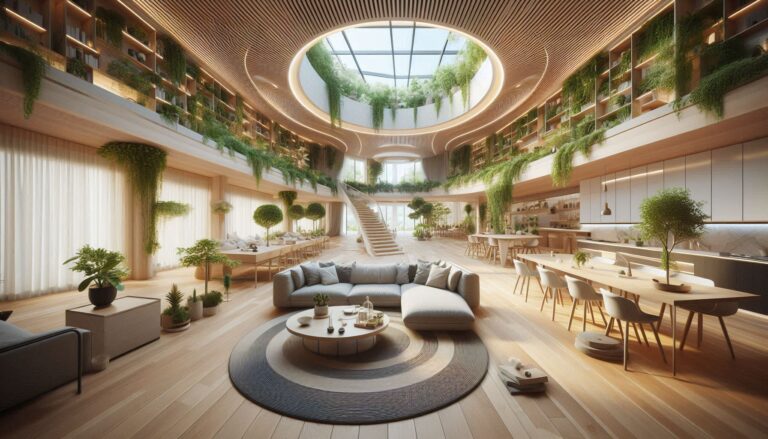Sustainable Building Materials: The Top Choices for Eco-Friendly Architecture

Sustainability is a driving force in the world of architecture and interior design, with a growing emphasis on using eco-friendly building materials. From natural, renewable resources to cutting-edge technologies, sustainable materials help reduce the environmental impact of construction projects. Here’s a look at some of the top choices for eco-friendly building materials:
1. Bamboo: A Renewable Resource
Bamboo is a sustainable material that grows rapidly and requires minimal water or pesticides. It’s incredibly strong, durable, and versatile, making it an excellent choice for flooring, furniture, and even structural elements. Bamboo is also biodegradable and can be recycled, making it an eco-friendly alternative to traditional hardwoods.
2. Recycled Materials: Reducing Waste
Recycled materials, such as reclaimed wood, glass, and metal, are becoming increasingly popular in sustainable architecture. By repurposing materials that would otherwise end up in landfills, architects can reduce the environmental impact of new construction. Recycled steel, for example, requires significantly less energy to produce than new steel, making it a sustainable choice for structural components.
3. Hempcrete: A Green Building Block
Hempcrete is a bio-composite made from hemp fibers, lime, and water, and it’s gaining recognition as a sustainable building material. It’s lightweight, durable, and has excellent thermal insulation properties. Hempcrete is also carbon-negative, meaning it absorbs more CO2 during its growth than it emits during production, making it an environmentally friendly option for both walls and insulation.
4. Cork: A Natural Insulator
Cork is a renewable material harvested from the bark of cork oak trees. It’s lightweight, fire-resistant, and an excellent natural insulator. Cork can be used in flooring, wall coverings, and furniture, providing both aesthetic appeal and sustainability. Since cork is harvested without harming the trees, it’s considered a highly renewable resource.
5. Low-VOC Paints and Finishes
Volatile organic compounds (VOCs) are harmful chemicals commonly found in paints, varnishes, and finishes. Low-VOC and zero-VOC paints and finishes are an eco-friendly alternative that improves indoor air quality and reduces the environmental impact of production. These products
are becoming a staple in sustainable interior design, offering vibrant color choices without the harmful side effects of traditional paints.
6. Recycled Plastic: Turning Waste into Building Materials
Recycled plastic is being used to create durable building materials, such as plastic lumber, insulation, and flooring. This material helps reduce plastic waste and offers a sustainable alternative to traditional building materials. Recycled plastic is also highly resistant to weathering and can be easily molded into various shapes, making it versatile for use in both interior and exterior applications.
Conclusion
As the demand for sustainable building materials grows, architects and designers are increasingly turning to innovative, eco-friendly solutions. From bamboo and hempcrete to recycled materials and low-VOC finishes, these sustainable options are not only reducing the environmental impact of construction but also creating healthier, more energy-efficient spaces. Sustainable architecture is the future of design, offering a






